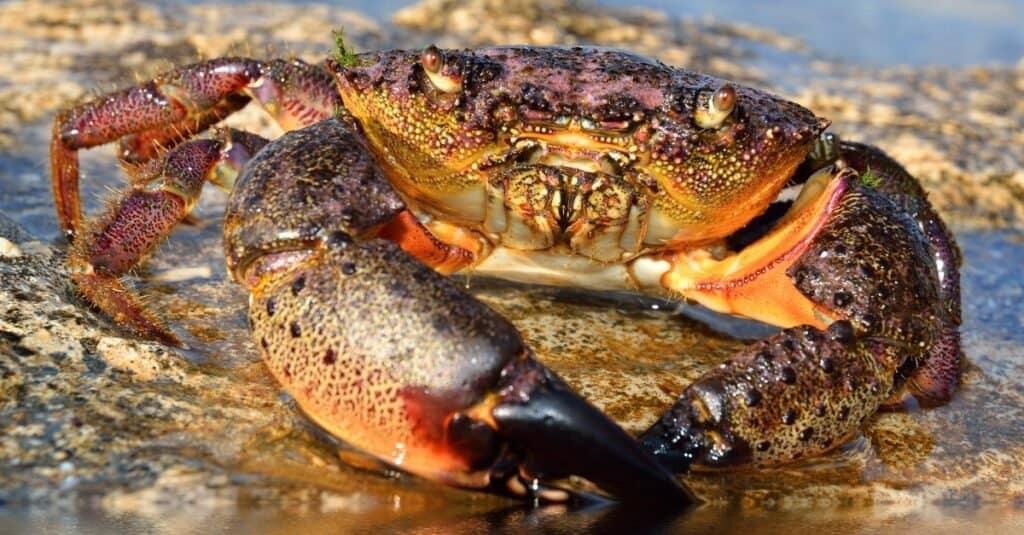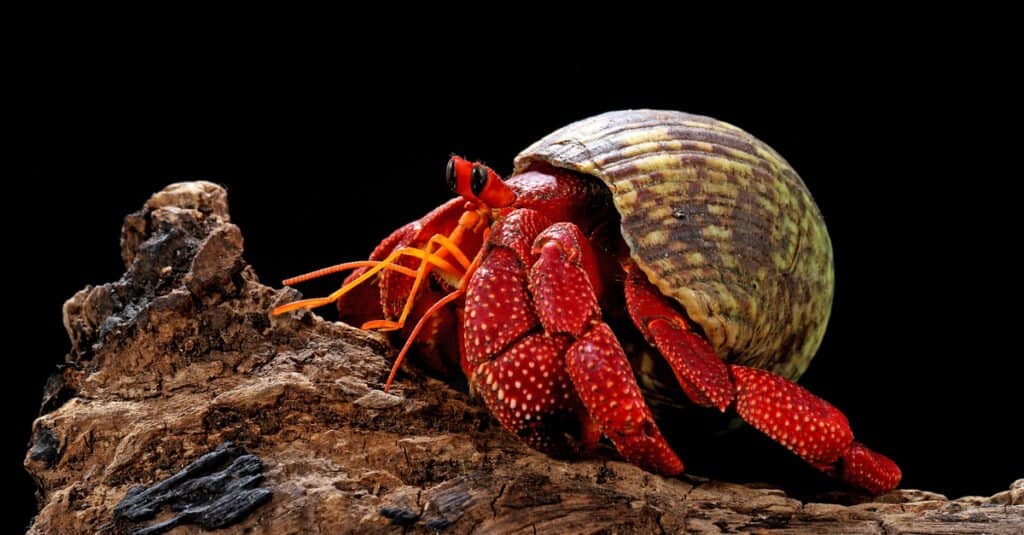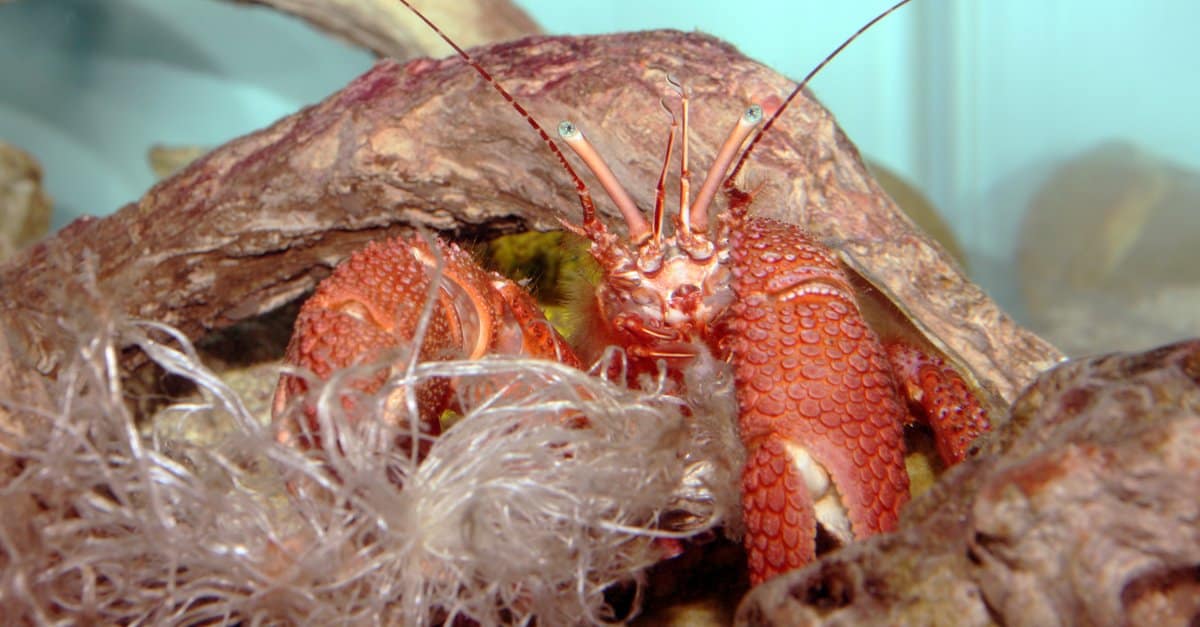
What’s your initial reaction when you see a crab during your beach day? Are you immediately terrified and running for cover? Or are you instantly fascinated by this amazing creature that has found its way into our dietary menu? The chances are that it could be both! After all, crabs are pretty fascinating marine creatures.
Throughout human history, people worldwide have enjoyed studying the behavior of crabs. Are you ready to discover everything there is to know about crabs? We’ve got the scoop on crabs, including the average crab lifespan and what threats they face in the wild.
The Rundown On Crabs

Crabs dwell in more diverse habitats than other aquatic animals. They can be found practically anywhere in the sea.
©iStock.com/connect11
Crabs and lobsters are classified as decapods, implying they have ten limbs. Crayfish, prawns, and shrimp are other examples of decapods.
Crabs first appeared during the Jurassic period. There are currently over 6,700 species of crab. Crabs may be found in all of the world’s seas, as well as fresh water and on land, especially in tropical areas. Freshwater crabs account for around 850 of all crab species.
We instantly recognize crabs for their shell. However, this shell is actually a skeleton on the outside of its body. This means that they are well shielded from predators. Along with their tough exoskeleton, crabs have a single pair of claws. Their claws (pincers) are their most powerful weapons. They serve at least three purposes. The job of the pincers in feeding is to grab and control their prey. If the meal is a shellfish, the pincers can use force to open or shatter the shell. Pincers are also employed in male fights and signaling to other crabs.
Let’s take a look at the crab’s lifespan next!
How Long Do Crabs Live?

Crabs have an average lifespan of 3 to 5 years, with some species living up to 30 years.
©Lauren Suryanata/Shutterstock.com
The average lifespan of a crab is between three to five years. However, this greatly depends on the species of the crab. There are many different crab species, and their age ranges all vary.
Let’s compare the average lifespan of different well-known crab species:
- King Crab: Red king crabs can live up to 20-30 years in the wild.
- Snow Crab: Snow crabs may live for up to 20 years, according to scientists.
- Blue Crab: Blue crabs often live for three to four years. They mature between 12 and 18 months. Water temperature influences growth rates. They develop faster in warmer water.
- Dungeness Crab: Dungeness crabs live for an average of ten years.
As you can see, some of these species have vastly different life expectancies. Crab life expectancy also varies according to habitat. When properly cared for, crabs raised as pets can live longer than wild crabs. For a long time, hermit crabs have sometimes been seen as ‘throwaway pets’ that will only last a few months. However, species such as the Coenobita clypeatus may live for up to 20 years if properly cared for, and some have lived for up to 32 years.
The Average Crab Life Cycle
As you can see, the lifespan of a crab is extremely intriguing. All crabs exhibit such disparities in how long they can live in the wild. Now, let’s take a closer look at each phase of the crab life cycle to understand it better.
Mating
Crabs attract mates through chemical pheromones, visual, auditory, or vibratory cues. After mating, many female decapod crabs may retain male sperm until their eggs are ready to be released. When the eggs are released, the stored sperm travels over them and fertilizes them.
Eggs
Red crabs may lay up to 100,000 eggs. Meanwhile, a female blue crab may lay up to 8 million eggs in a single mating season. Horseshoe crabs may lay up to 88,000 eggs in a single egg-laying season. The fertilized eggs are stored by female crabs inside a huge spongy mass in the center of their bodies and an abdominal flap. The eggs are near the pleopods, the crabs’ little legs. Female crabs continuously use their pleopods to wave water above the eggs to keep them healthy.
Larvae
Baby crabs are referred to as zoeas. The zoea larvae emerge from their eggs and are taken a long distance away from their mothers. The zoeas are translucent, with jointed limbs and crusty skin on the outside. They have segmented tails that help them swim. They also have spikes on their top bodies to defend them. Before changing into a megalopa stage, which resembles an adult crab, each species has a certain number of zoeal phases separated by molts. After one additional molt, the crab is a juvenile, dwelling on the seafloor rather than afloat.
Adulthood
A tiny juvenile crab with claws is capable of feeding on small fish. This little crab will molt frequently and develop quickly, reaching maturity in around 18 months to complete the cycle.
What Factors Impact The Crab Lifespan?

Crabs are captured, farmed, and consumed globally in millions of tons each year.
©iStock.com/Canon_Bob
Crabs are an essential component of our environment. They account for 20% of all marine crustaceans captured, farmed, and consumed globally, equal to 5 million tons each year. As a result, several factors could influence our capacity to sustain a healthy crab population.
These factors include:
- Loss of habitat: Underwater grass beds provide safe haven for juvenile crabs from predators. The loss of these grasses means a loss of nursery habitat for many crab species. Young crabs utilize shallow water habitats near marshes and wooded regions to locate shelter, and the loss of this habitat has a negative influence on their survival chances.
- Predators: Crabs are preyed upon by a plethora of predators in the water. Their predators include anything from fish and birds to sea animals like sharks, dolphins, and porpoises. Even octopuses snack on them. As we know, humans also indulge in eating crabs.
- Climate change: Changing water temperatures may affect predator numbers, prey availability, and winter mortality. Sea level rise may have an impact on nursery and foraging environments. Changes in precipitation may increase regions of low dissolved oxygen, reducing foraging resources and limiting the quantity of appropriate habitat for the crabs to live in.
Thank you for reading! Have some feedback for us? Contact the AZ Animals editorial team.








